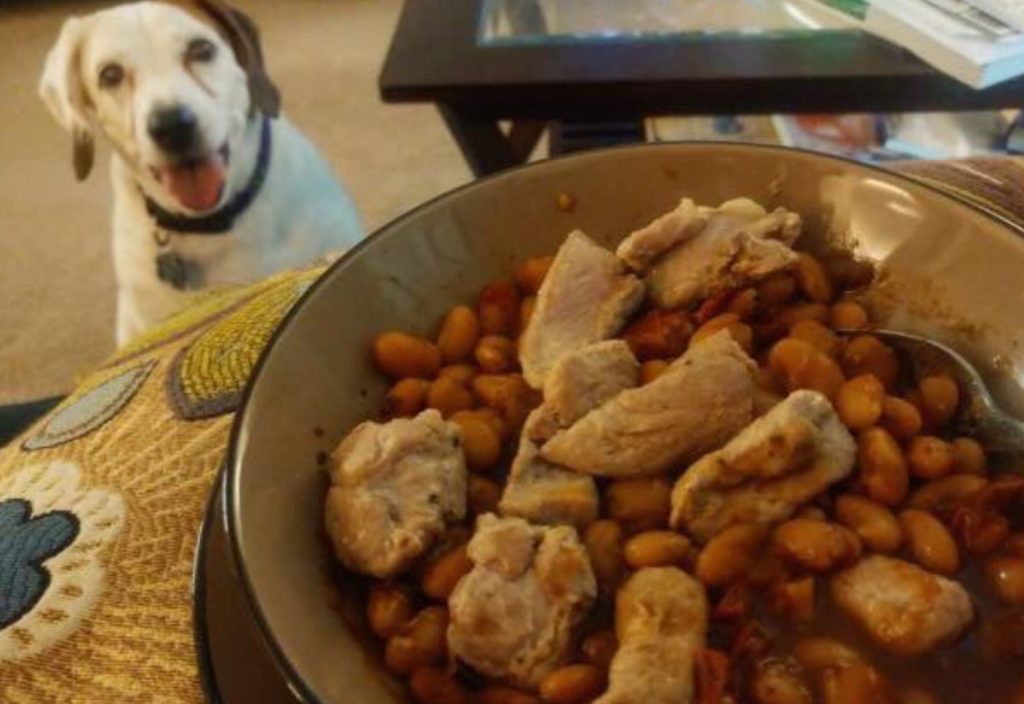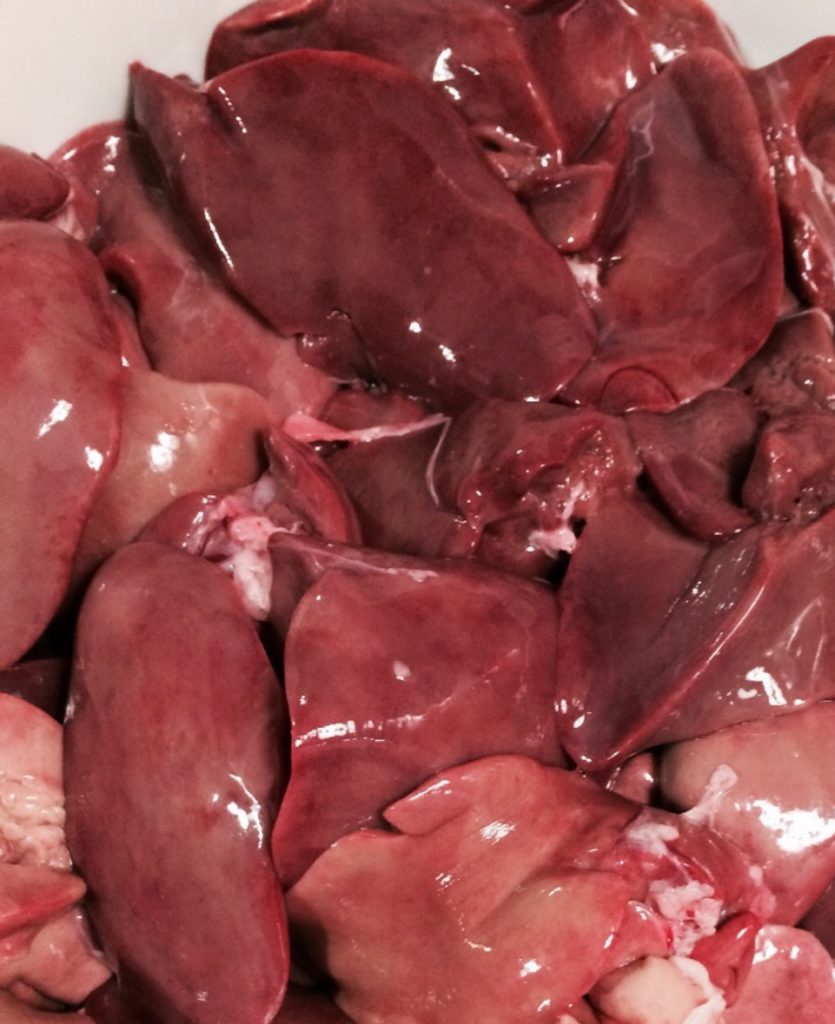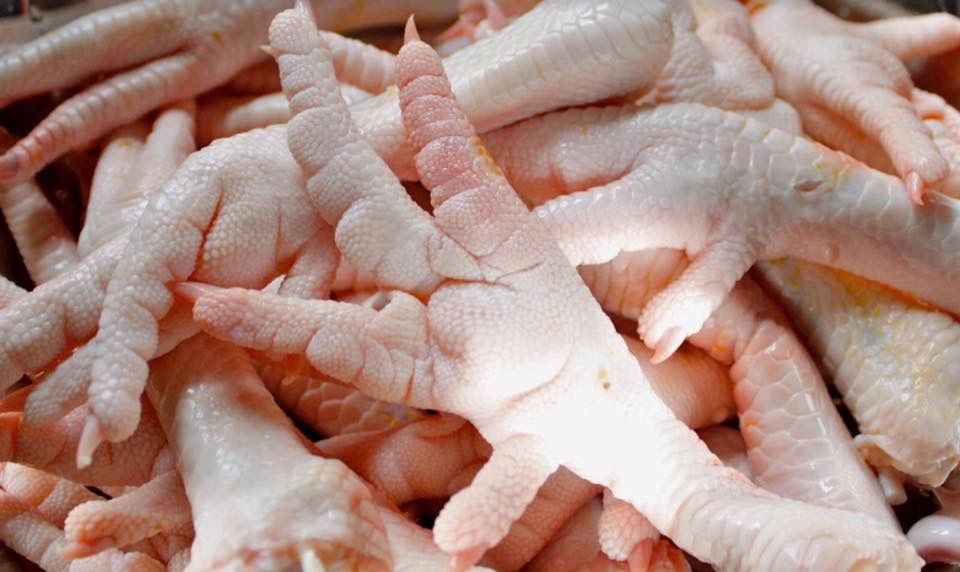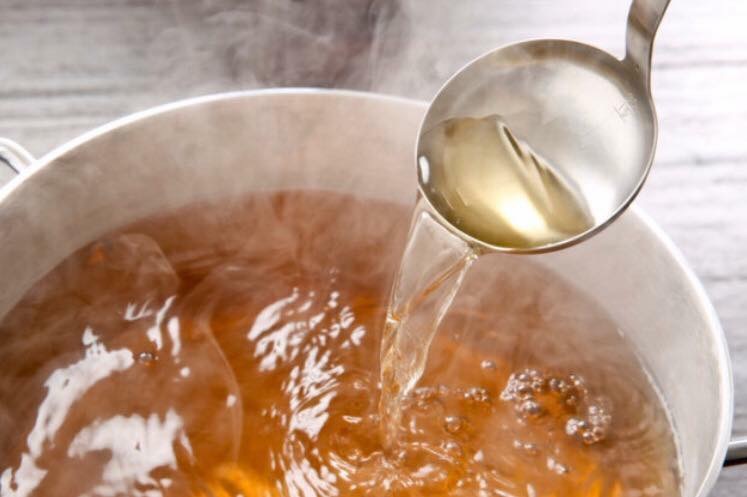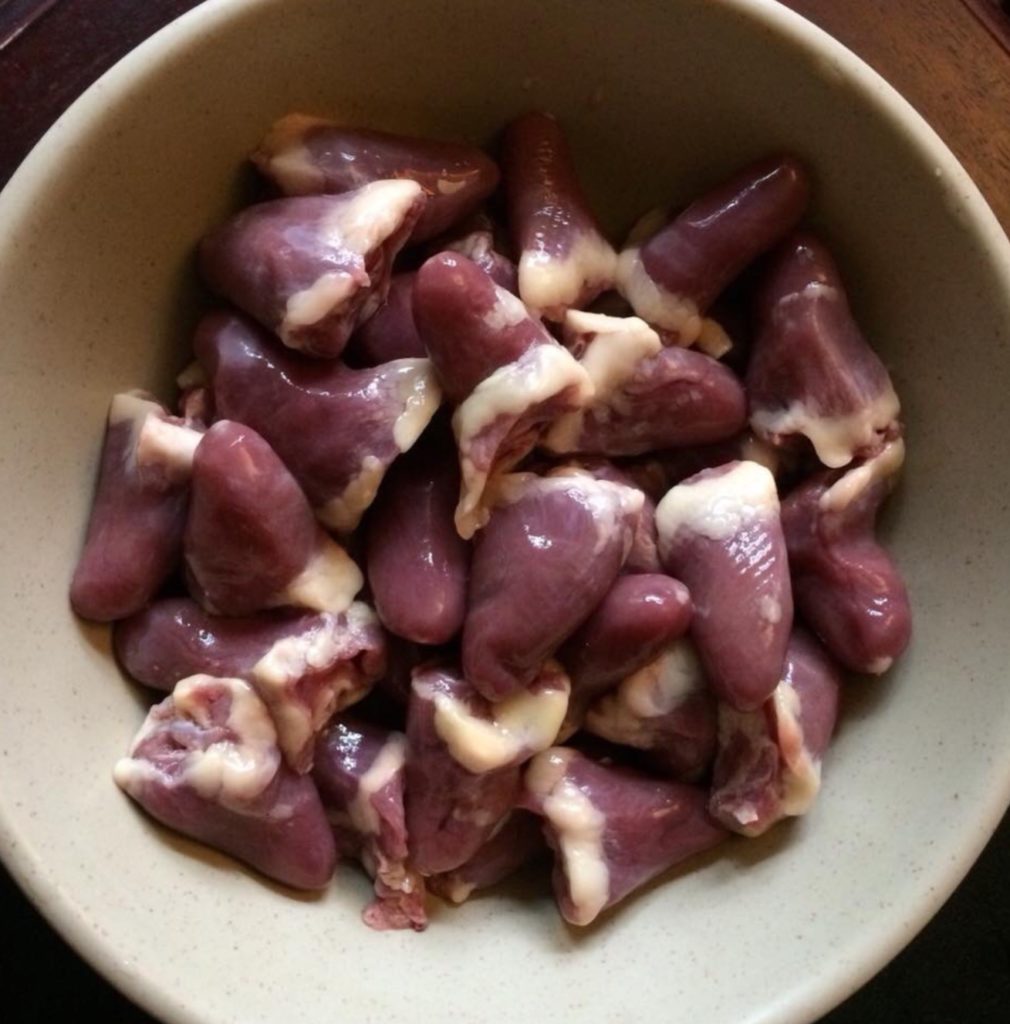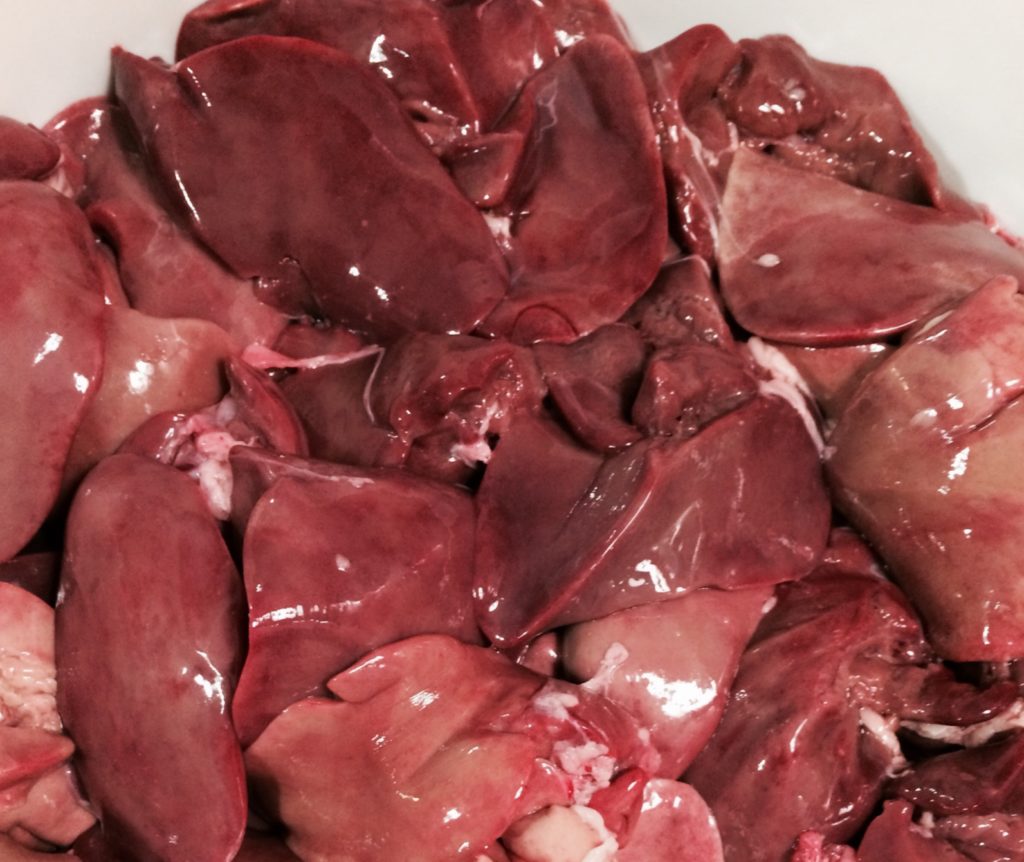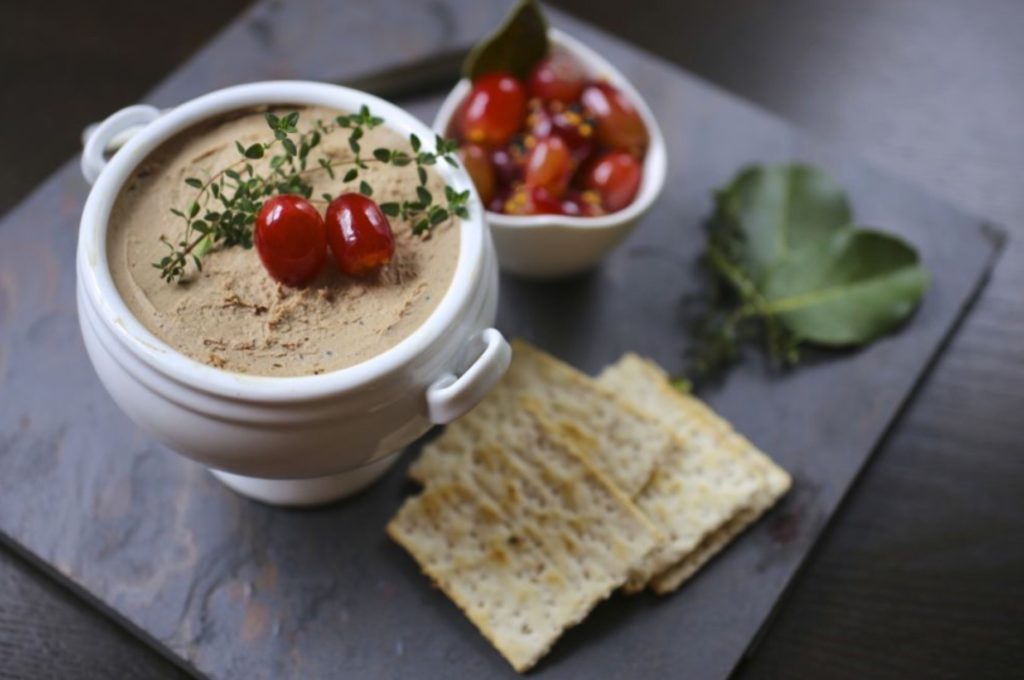This video is short and sweet and simple. Filmed just the other day, after a 4-inch snow, the cows met us at the fence for some snacks. Meet our newest herd member, bull calf Ron!
KW Homestead
Pasture Raised Poultry & Edible Landscaping Plants Since 2013
Category: our thoughts (page 10 of 13)
This video shows our cute and active Red Ranger chicks—the first batch of 2018.
Our Red Ranger chicks spend the first few weeks of their life in a warm brooder, and At about 3 weeks old they move outside to pasture. Right now they’re small and don’t eat very much food, but they won’t stay little for long. In a few months they’ll be mature, large roosters. Amazing!
Did you know that pets love our meat, too? Perhaps you’re feeding a raw diet… Necks, carcasses, hearts, and livers are great for dogs and cats! Or maybe you’re supplementing your pet’s everyday food… Duck eggs, meaty bits, and even duck fat are nutritious and delicious additions to their diet! Megan’s dog, Banjo, sure thinks so (see the below image for proof, haha!).
Whatever tickles your fancy, we’ve got you and your cats and dogs covered! Nutrient dense organ meats are great as supplements and raw carcasses and gelatinous broth provide an awesome treat! Don’t forget about dishing out your leftover fat or even a scrambled or raw duck egg from time to time!
Pets Need Nutrient Density Too
Especially if you feed your pet a fully or partially raw diet, it’s important to to to feed them all of the organs and all of the parts of an animal that they would eat had they tracked and killed that animal in the wild. Organ meats (like hearts and livers) are the most nutrient-dense part of the animal, so they’re a must for pets who eat raw!
Why Organ Meats?
Organ meats are densely packed with just about every nutrient, including high doses of many of the B vitamins: B1, B2, B6, folic acid, and B12. They are also filled with important minerals like phosphorus, iron, copper, magnesium, and iodine, and they provide the important fat-soluble vitamins A, D, E and K. It’s also important to know that animals raised outside on grass, like our birds, contain even higher levels of these essential nutrients than their grain-fed, “cage free” counterparts! That’s huge!
Where to Start?
So, you’ve decided to feed your pet some of our meat, but where do you start? We have a lot of options available, so you can select cuts that fit easiest into your routine! Some of our customers feed raw or cooked necks (if cooked, folks often shred the meat off the bone). We feed a variety of goodies to our dogs, Bolt and Coona. Sometimes they’ll enjoy a raw duck egg, other times a dollop of duck fat, or leftover tendons and cartilage from a chicken soup. Their current favorite snack is broth jello, made from the bones and carcasses of our Red Ranger chickens.
Perhaps you’ve resolved to make 2018 the year of healthy, local, and fresh eating! Sometimes it’s tough to get started on the path to be your healthiest you. Starting small is the way to go, and there’s nothing easier than adding a delicious and warm beverage to your routine.
This is totally the time of year when everyone needs some really great broth in their house! Since the cold and flu season here and the weather is freakishly in the single digits, one of the best ways to ensure your family’s continued health and nutrition is through bone broth. Our birds make the best broth because they’re raised on pasture, free ranging around among the greenery! That means they’re getting tons of extra vitamins and minerals.
Using chicken feet for broth or soup is really one of the best ways to get loads of flavor, and to ensure you’re getting adequate nutrition, gelatin, and collagen–among other important micronutrients!
Why Should You Be Drinking Chicken Foot Broth?
Bone broth has been known for a long time to assist in joint health, gut and instestinal health, and immunity. Gelatin and collagen are pulled from the skin, cartilage, and joints of the bones or feet. Collagen builds and rebuilds cells and trace minerals nourish us from the inside out.
Feet are pretty much skin, cartilage, and ligament, so you get the picture… A swirling pot of “liquid luck.” As we enter the season when germs make their rounds, having chicken feet on hand can be a huge help in battling illness amoung your big and little family members!
Making Broth is Easy!
They may look scary, but since our chicken feet are peeled and ready to go straight in your soup pot, all you need to do is add a couple to each stock you make and you’re all set! Or, if you’re even more daring you can make an entire pot of broth with only a pack of feet. If this seems daunting to you check out this simple recipe on how to do just that. You won’t regret it! All you need is a soup pot, water, your chicken feet, and some optional herbs.
You might be shocked by the idea of eating hearts, but never fear, they’re yummy and easy to cook! A delicious meal of stir fried or grilled hearts sure makes an exciting dish for your hot date. Wink, wink.
Average hearts bought in a grocery store don’t benefit you as much as you might think. Although they carry many of the same micro nutrients as our chicken and duck hearts, they also carry the toxins that the animal, which has been raised in a cage or inside and fed subpar feed, has accrued in its organs throughout its life span. So, while these hearts carry positive nutrients they also carry detrimental ingredients as well. But, KW Homestead’s chicken and duck hearts are only good for you! Because our chickens are raised on pasture and fed non GMO feed that is fresh, high-quality, and local, their organs (hearts included) are as clean as can be! This means that when you supplement your diet and your family’s diet with our chicken or duck hearts you can feel confident in what good stuff you’re getting!
Why Hearts?
Since it’s a muscle, hearts share many nutritional components with steak, roasts and ground beef, but they are way more tender and easy to cook to perfection. Not to mention the extra mincronutirents…
Hearts have higher amounts of protein, thiamine, folate, selenium, phosphorus, zinc, CoQ10 and several B vitamins. Eating hearts is a great way to rack up amino acids that can improve metabolism and compounds that aid the production of collagen and elastin, which fight wrinkles and aging. Research shows that the amazing CoQ10 plays several key roles in your body. One of its main functions is to help generate energy in your cells and it’s involved in making ATP, which is involved in energy transfer within your cells. Its other important role is to act as an antioxidant and to protect cells from oxidative damage. Talk about amazing hearts!
A Few Heart Recipes
Hearts can be prepared for a meal super quickly, and make amazing stir frys. Our favorite way to cook them is this: slice them in half (long-wise) and marinate them in a bowl for 30 minutes with your favorite blend of Asian-inspired spices. Sauté them for about 10 minutes and remove. Add your go-to stir fry veggies, sauté until nearly done, and combine the mostly-cooked hearts. Continue cooking until tender and fully cooked. Yum!
This heart yakitori recipe, though a little more complicated, makes for a lovely presentation. The chef who created this recipe says: “Let me give you a tip for dealing with a carnivore around Valentines Day—skip the teddy bear and the chocolates. If you really want to show you care, do it through the medium of meat!” We love that sentiment!
In this video, we wanted to share with you our reflections on being working farmers, and how juggling a baby and work tasks work out. This video is especially catered towards other farmers who are considering growing their human families… Giving them a few insights about how to include your baby in your farm life from the beginning!
Not All Liver is Created Equal…
Livers might not be a part of your usual diet, and if they’re not, now is a great time to start supplementing your body with this super food.
Traditional livers bought in an average grocery store don’t benefit you as much as you might think. Although they carry many of the same micro nutrients as our livers, they also carry the toxins that the animal, which has been raised in a cage or inside and fed subpar feed, has accrued in its organs throughout its life span. The liver is one of the organs that holds onto all of the toxins and chemicals that the animal has come in contact with or consumed. So while these livers carry positive nutrients they also carry detrimental ingredients as well. But, KW Homestead’s chicken livers are only beneficial! Because our chickens are raised on pasture and fed non GMO feed that is fresh, high-quality, and local, their livers are as clean as can be! This means that when you supplement your diet and your family’s diet with our chicken livers you can only expect good things.
Liver is a Nutritional Powerhouse
Did you know that a 100g serving of chicken liver provides MORE THAN HALF of the recommended daily amount for iron?!
One serving, around 3.5 oz of chicken liver, offers 172 calories, more than 100 of which come from protein! This serving contains 25.8g of protein, which provides MORE THAN 40% of your recommended daily amount for protein.
Wonderfully, chicken liver is a complete protein because it contains ALL of the essential amino acids, which are those that your body cannot produce. One serving provides MORE THAN 50% of the requirement for all essential amino acids!
One serving also supplies MORE THAN 100% of the recommended amount of vitamin A, folate, pantothenic acid, riboflavin, and B12 and MORE THAN 50% of your daily needs of choline, vitamin B6, and niacin.
This makes liver an ideal food for pregnant and nursing women. Emma made sure to eat tons of pate during her pre-pregnancy journey! People who eat Paleo or Weston A. Price diets can trust that our livers provide a healthful, clean, and nutrient dense energy source.
Many folks also enjoy feeding livers to their pets, especially those feeding a raw diet. Liver is certainly one food that your dog won’t turn down!
A Few Liver Recipes
Our two favorite ways to cook with liver are by creating a pate with butter and spices and by making a liver dumpling soup. Both methods have their merits, with the dumpling soup perhaps better suited for folks who don’t love the taste of liver.
Happy eating!
Sometimes we forget to videotape our breeding flock of turkeys during their “carefree” season: winter. As usual, the males spent most of the day showing off for each other, while the females were off in search of snacks. You can hear Emma gobbling on this video to motivate the toms to respond. They sure are some fun, noisy critters.
Our 2-month-old son, Uhtred, loves being outside! He’s met all of the animals, and the turkeys are his stand-out favorites. He loves the noise! Check out this video of our pasture-raised. free-range, non-GMO heritage turkeys being herded around the yard by Uhtred!
Now that the turkeys are reaching maturity, the toms are getting frisky and excited to battle each other for hen affection. Even though the hens ignore the boys, the toms sure do have fun messing with each other!
© 2025 KW Homestead
Theme by Anders Noren — Up ↑
